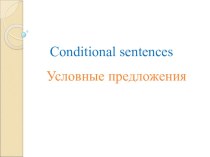- Главная
- Разное
- Бизнес и предпринимательство
- Образование
- Развлечения
- Государство
- Спорт
- Графика
- Культурология
- Еда и кулинария
- Лингвистика
- Религиоведение
- Черчение
- Физкультура
- ИЗО
- Психология
- Социология
- Английский язык
- Астрономия
- Алгебра
- Биология
- География
- Геометрия
- Детские презентации
- Информатика
- История
- Литература
- Маркетинг
- Математика
- Медицина
- Менеджмент
- Музыка
- МХК
- Немецкий язык
- ОБЖ
- Обществознание
- Окружающий мир
- Педагогика
- Русский язык
- Технология
- Физика
- Философия
- Химия
- Шаблоны, картинки для презентаций
- Экология
- Экономика
- Юриспруденция
Что такое findslide.org?
FindSlide.org - это сайт презентаций, докладов, шаблонов в формате PowerPoint.
Обратная связь
Email: Нажмите что бы посмотреть
Презентация на тему Music instruments
Содержание
- 2. String group- струнные инструменты
- 3. Violin [ ]
- 4. Viola [ ]
- 5. Difference between violin and viola1. The viola
- 6. Another difference that can be seen between
- 7. Cello [ ]
- 8. Violin/viola/celloThe violin is the smallest listed, then
- 9. Harp [ ]A person
- 10. Wind group
- 11. Flute [ ]A musician
- 12. Oboe [
- 13. Clarinet [
- 14. Bassoon [
- 15. Brass group
- 16. Trumpet [
- 17. French horn [
- 18. Tuba [
- 19. Percussion group
- 20. Piano
- 21. Accordion [
- 22. Saxophone [
- 23. Synthesizer [
- 24. Скачать презентацию
- 25. Похожие презентации
String group- струнные инструменты

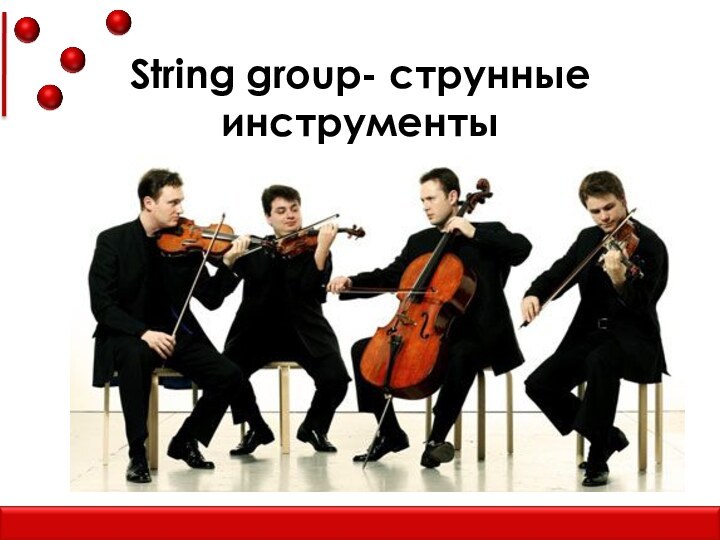
![Music instruments Violin [ ]](/img/tmb/11/1078409/f1aea83a015162f21aa474b424d6cd90-720x.jpg)
![Music instruments Viola [ ]](/img/tmb/11/1078409/91fc63d745253c1917dd375054838122-720x.jpg)
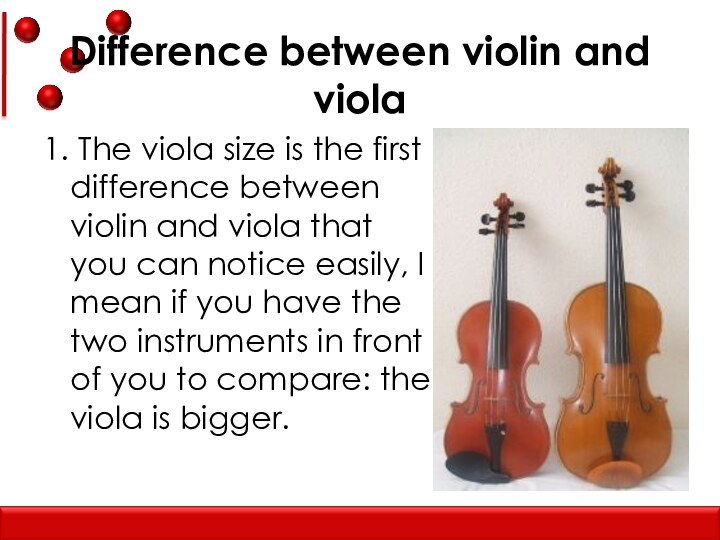
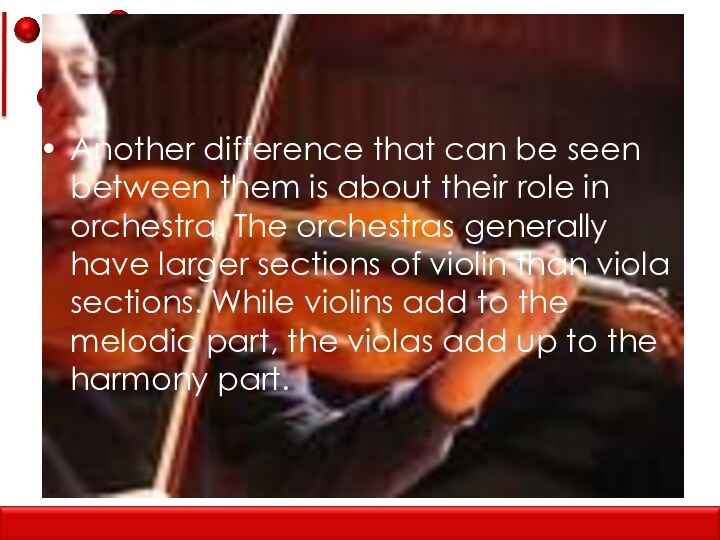
![Music instruments Cello [ ]](/img/tmb/11/1078409/ffa761491ba7cc46286f3658441a428f-720x.jpg)
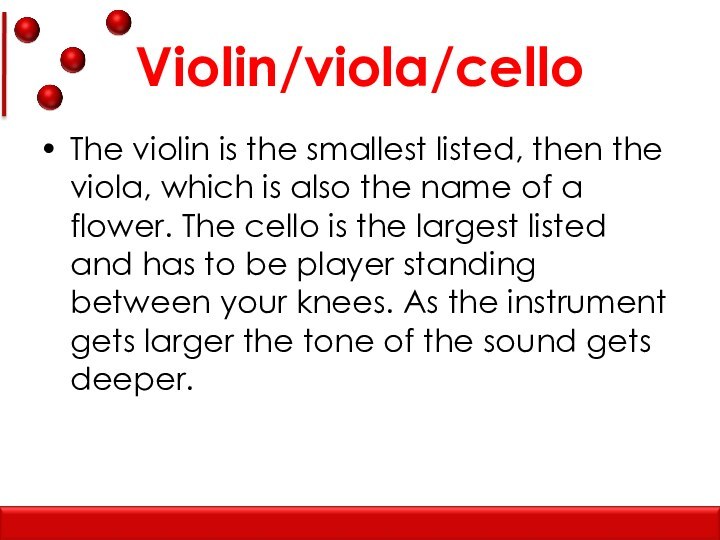
![Music instruments Harp [ ]A person who plays the harp is](/img/tmb/11/1078409/098c18d9512f22402f0d0635a67d4d3c-720x.jpg)
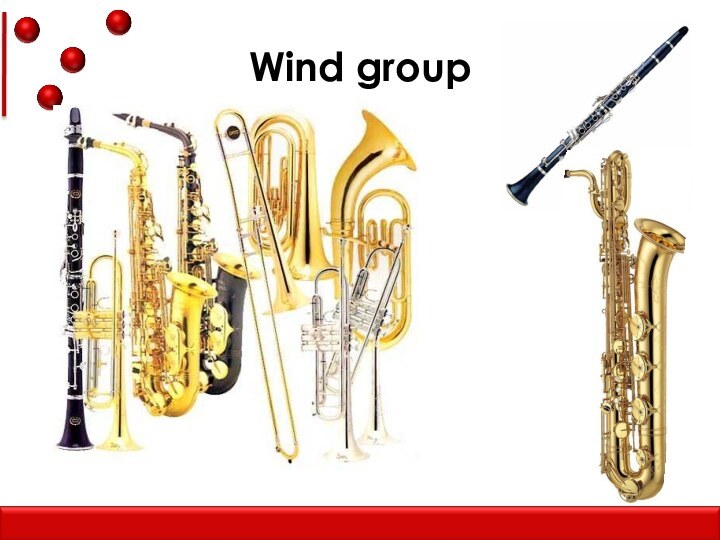
![Music instruments Flute [ ]A musician who plays the flute can](/img/tmb/11/1078409/c2cb551be6495d8e8972bb2c2db7a750-720x.jpg)
![Music instruments Oboe [ ]The spelling](/img/tmb/11/1078409/6e8acdc6350422bb57d8f1936dae8614-720x.jpg)
![Music instruments Clarinet [ ]A person](/img/tmb/11/1078409/420b6bebcc3b36e618d17029c7571fe5-720x.jpg)
![Music instruments Bassoon [ ]Listeners often compare its](/img/tmb/11/1078409/ade205164bc4cc9dbf5a0383149d04ac-720x.jpg)
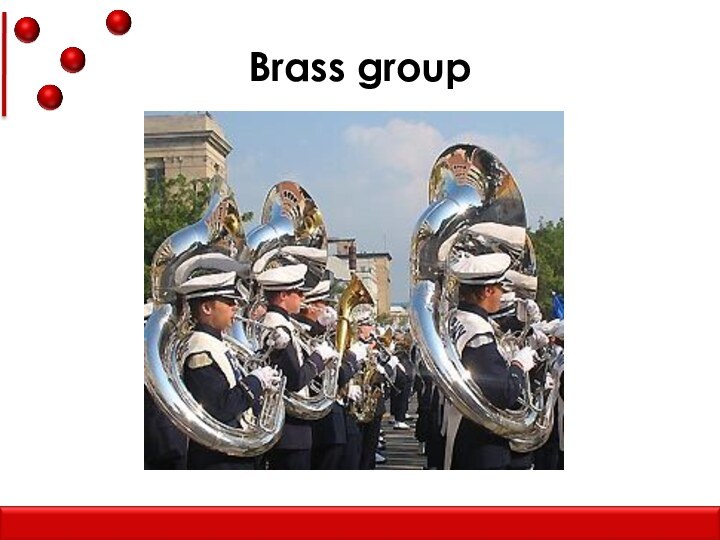
![Music instruments Trumpet [ ] The trumpet is](/img/tmb/11/1078409/00b6882e3278869daa9c1d761ac6d201-720x.jpg)
![Music instruments French horn [ ]Descended from the natural horn,](/img/tmb/11/1078409/b73a178d5309728d12d45750d1db6ea4-720x.jpg)
![Music instruments Tuba [ ]The tuba is](/img/tmb/11/1078409/f3299cbeb2e25995229f490c9f28e697-720x.jpg)
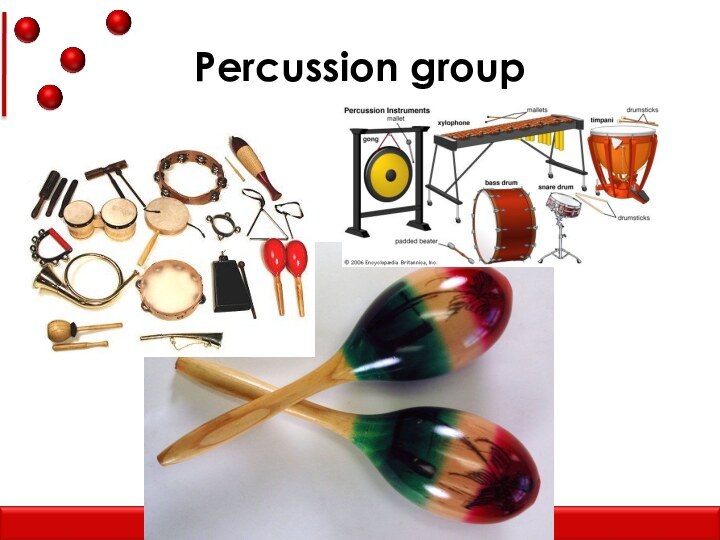

![Music instruments Accordion [ ]The](/img/tmb/11/1078409/cdf35378067fb82738c1591c219b0343-720x.jpg)
![Music instruments Saxophone [ ]The saxophone](/img/tmb/11/1078409/f75ddc3e4450f5363a6fefaa728476a4-720x.jpg)
![Music instruments Synthesizer [ ]A](/img/tmb/11/1078409/2aa3a1d1e0f2f295a6b3788735196239-720x.jpg)

Слайд 5
Difference between violin and viola
1. The viola size
is the first difference between violin and viola that
you can notice easily, I mean if you have the two instruments in front of you to compare: the viola is bigger.Слайд 6 Another difference that can be seen between them
is about their role in orchestra. The orchestras generally
have larger sections of violin than viola sections. While violins add to the melodic part, the violas add up to the harmony part.
Слайд 8
Violin/viola/cello
The violin is the smallest listed, then the
viola, which is also the name of a flower.
The cello is the largest listed and has to be player standing between your knees. As the instrument gets larger the tone of the sound gets deeper.
Слайд 9
Harp [ ]
A person who
plays the harp is called a harpist or harper.
Folk musicians often use the term "harper", whereas classical musicians use "harpist".
Слайд 11
Flute [ ]
A musician who
plays the flute can be referred to as a
flute player, a flautist, a flutist, or less commonly a fluter.Aside from the voice, flutes are the earliest known musical instruments. A number of flutes dating to about 40,000 to 35,000 years ago have been found in the Swabian Alb region of Germany. These flutes demonstrate that a developed musical tradition existed from the earliest period of modern human presence in Europe.
Слайд 12
Oboe [ ]
The
spelling "oboe" was adopted into English ca. 1770 from
the Italian oboè, a transliteration in that language's orthography of the 17th-century pronunciation of the French word hautbois, a compound word made of haut ("high, loud") and bois ("wood, woodwind"). A musician who plays the oboe is called an oboist.Слайд 13 Clarinet [
]
A person who plays the clarinet is
called a clarinetist or clarinettist. Johann Christoph Denner invented the clarinet in Germany around the turn of the 18th century by adding a register key to the earlier chalumeau. Слайд 14 Bassoon [
]
Listeners often compare its warm, dark, reedy timbre to
that of a male baritone voiceСлайд 16 Trumpet [
]
The trumpet is used in many forms of
music, including classical music and jazz.A musician who plays the trumpet is called a trumpet player or trumpeter.


























